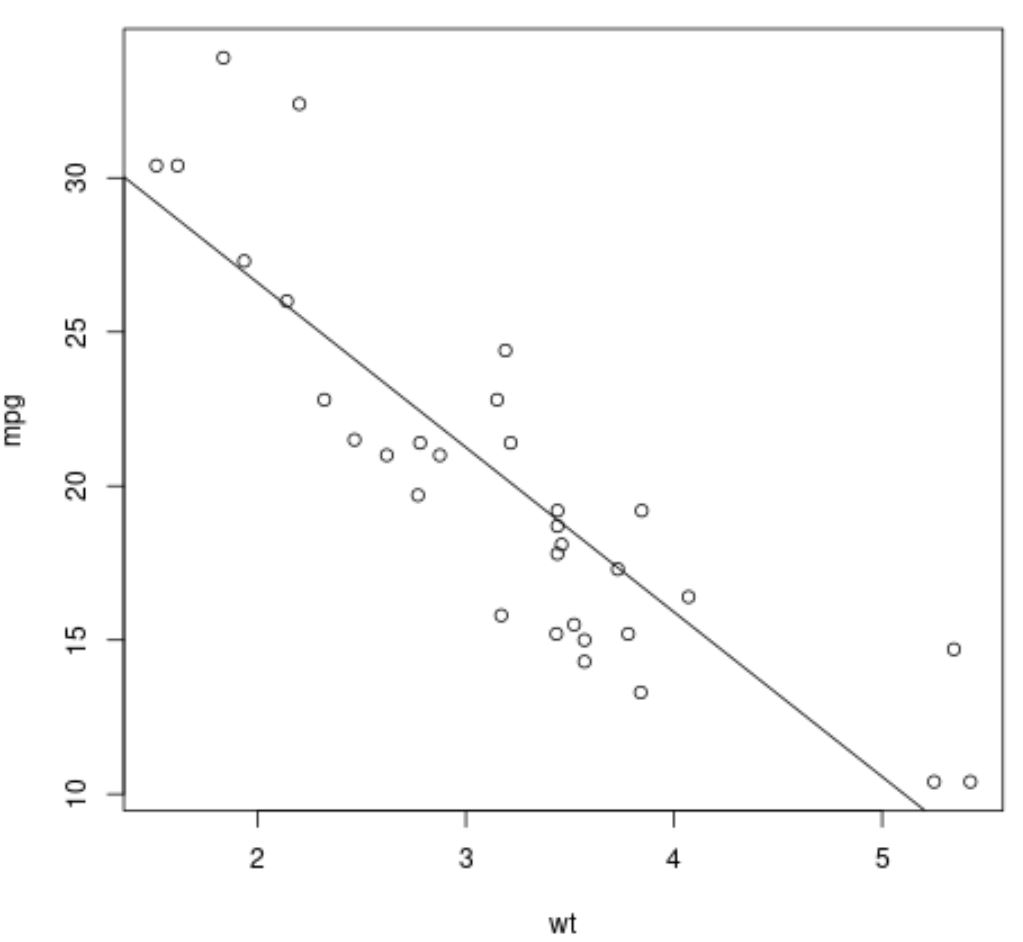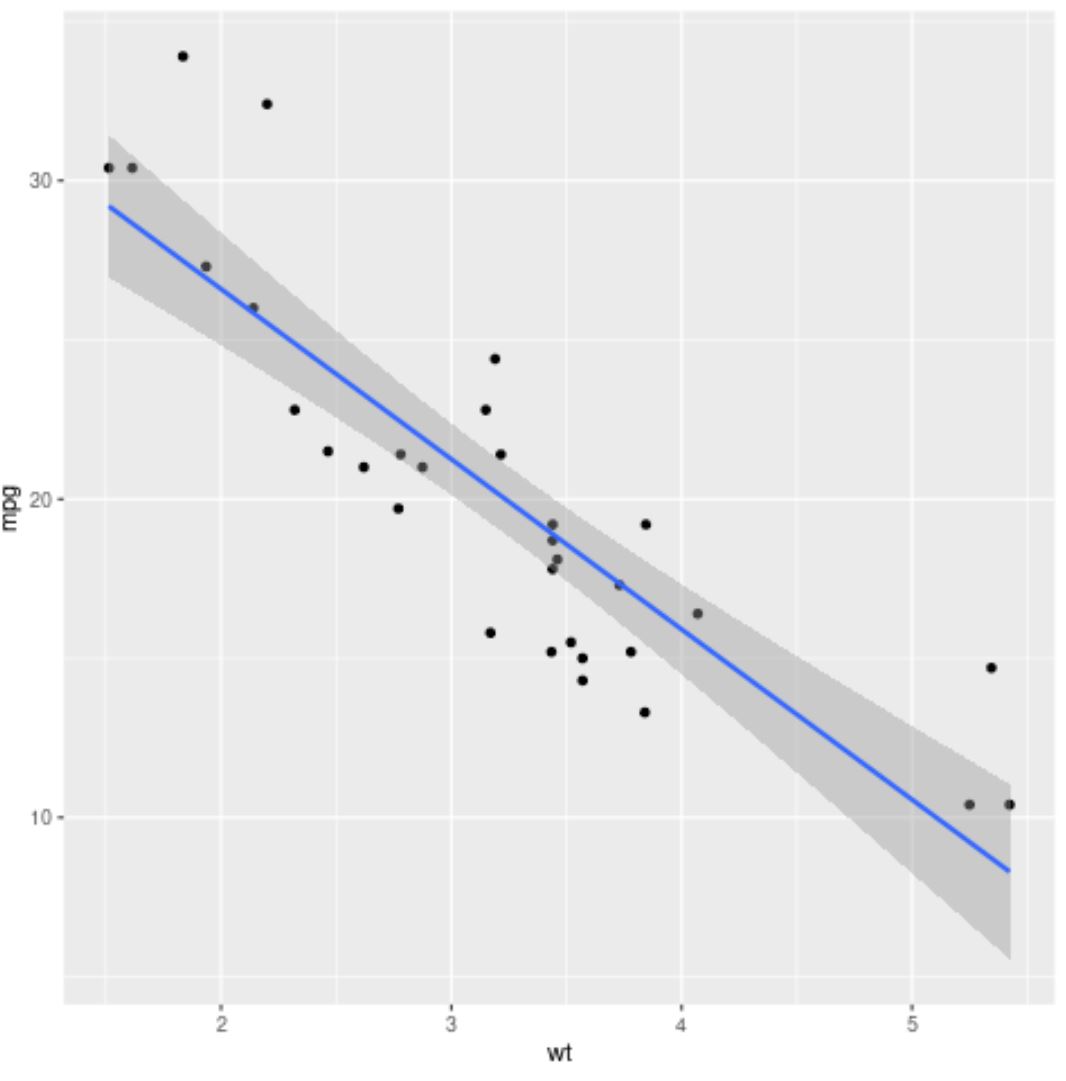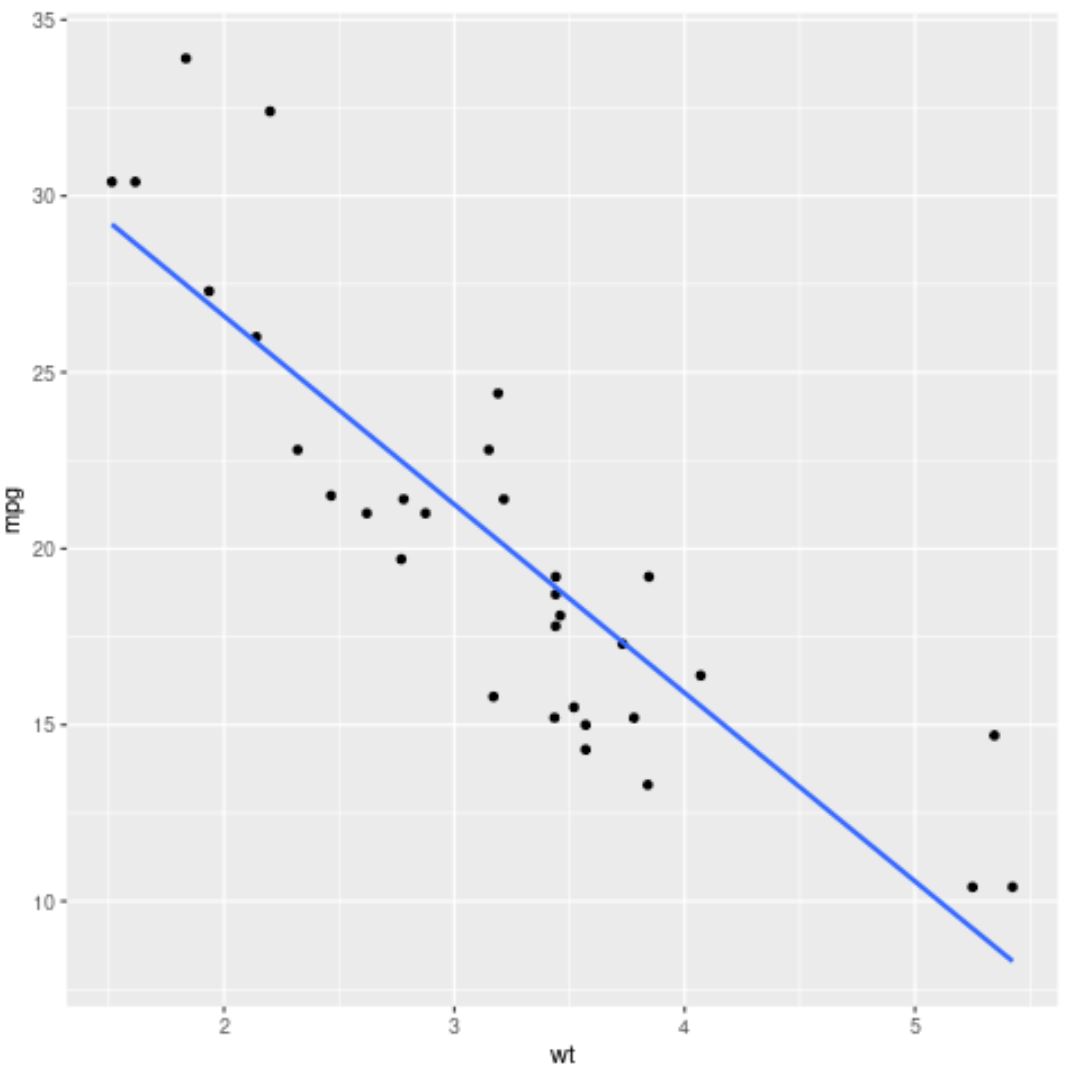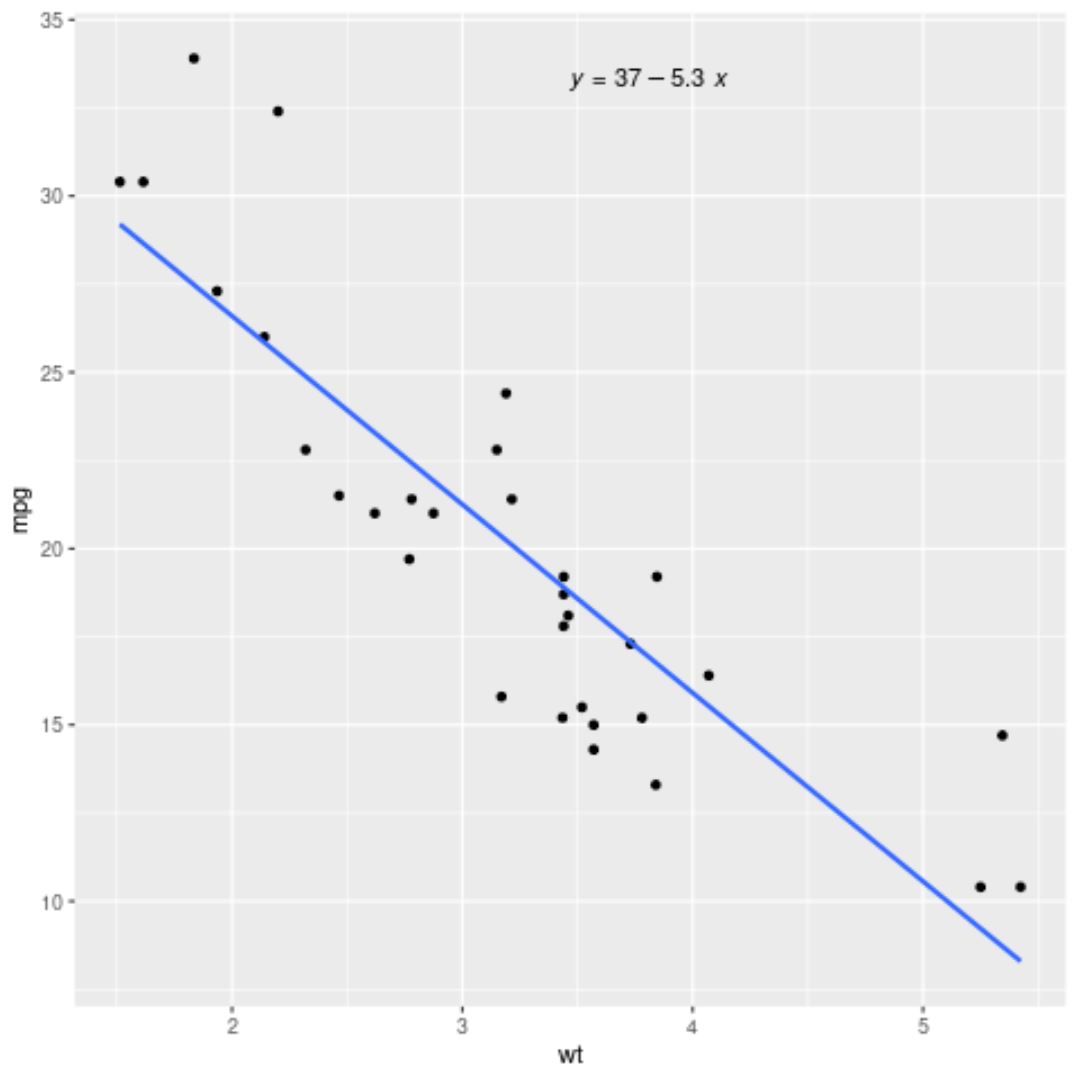วิธีการพล็อต lm() ผลลัพธ์เป็น r
คุณสามารถใช้วิธีการต่อไปนี้เพื่อพล็อตผลลัพธ์ของฟังก์ชัน lm() ใน R:
วิธีที่ 1: แปลง lm() ให้ผลลัพธ์เป็นฐาน R
#create scatterplot plot(y ~ x, data=data) #add fitted regression line to scatterplot abline(fit)
วิธีที่ 2: พล็อต lm() ส่งผลให้เกิด ggplot2
library (ggplot2) #create scatterplot with fitted regression line ggplot(data, aes (x = x, y = y)) + geom_point() + stat_smooth(method = " lm ")
ตัวอย่างต่อไปนี้แสดงวิธีการใช้แต่ละวิธีในทางปฏิบัติกับ ชุดข้อมูล mtcars ที่สร้างไว้ใน R
ตัวอย่างที่ 1: plot lm() ให้ผลลัพธ์เป็นฐาน R
รหัสต่อไปนี้แสดงวิธีการพล็อตผลลัพธ์ของฟังก์ชัน lm() ในฐาน R:
#fit regression model
fit <- lm(mpg ~ wt, data=mtcars)
#create scatterplot
plot(mpg ~ wt, data=mtcars)
#add fitted regression line to scatterplot
abline(fit)

จุดในกราฟแสดงถึงค่าข้อมูลดิบ และเส้นทแยงมุมตรงแสดงถึงเส้นถดถอยพอดี
ตัวอย่างที่ 2: พล็อต lm() ผลลัพธ์ใน ggplot2
โค้ดต่อไปนี้แสดงวิธีการพล็อตผลลัพธ์ของฟังก์ชัน lm() โดยใช้แพ็คเกจการแสดงข้อมูล ggplot2 :
library (ggplot2)
#fit regression model
fit <- lm(mpg ~ wt, data=mtcars)
#create scatterplot with fitted regression line
ggplot(mtcars, aes (x = x, y = y)) +
geom_point() +
stat_smooth(method = " lm ")

เส้นสีน้ำเงินแสดงถึงเส้นถดถอยพอดี และแถบสีเทาแสดงถึงขีดจำกัดของช่วงความเชื่อมั่น 95%
หากต้องการลบขอบเขตช่วงความมั่นใจ เพียงใช้ se=FALSE ในอาร์กิวเมนต์ stat_smooth() :
library (ggplot2)
#fit regression model
fit <- lm(mpg ~ wt, data=mtcars)
#create scatterplot with fitted regression line
ggplot(mtcars, aes (x = x, y = y)) +
geom_point() +
stat_smooth(method = “ lm ”, se= FALSE )

คุณยังสามารถเพิ่มสมการถดถอยที่ติดตั้งไว้ภายในกราฟได้โดยใช้ฟังก์ชัน stat_regline_equation() จากแพ็คเกจ ggpubr :
library (ggplot2)
library (ggpubr)
#fit regression model
fit <- lm(mpg ~ wt, data=mtcars)
#create scatterplot with fitted regression line
ggplot(mtcars, aes (x = x, y = y)) +
geom_point() +
stat_smooth(method = “ lm ”, se= FALSE ) +
stat_regline_equation(label.x.npc = “ center ”)

แหล่งข้อมูลเพิ่มเติม
บทช่วยสอนต่อไปนี้จะอธิบายวิธีดำเนินการงานทั่วไปอื่นๆ ใน R:
วิธีดำเนินการถดถอยเชิงเส้นอย่างง่ายใน R
วิธีการตีความเอาต์พุตการถดถอยใน R
ความแตกต่างระหว่าง glm และ lm ใน R